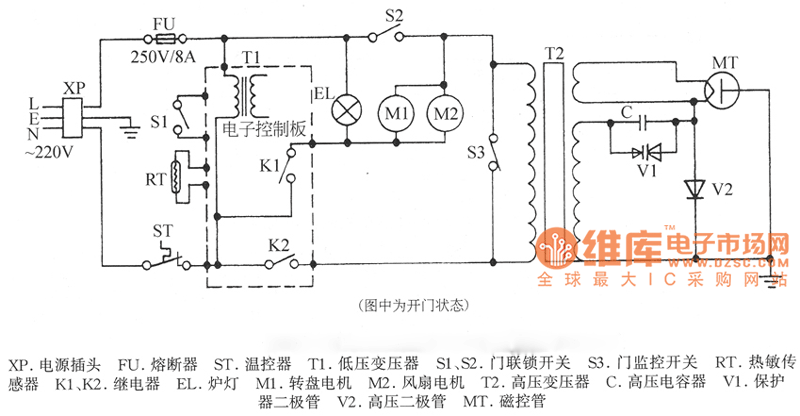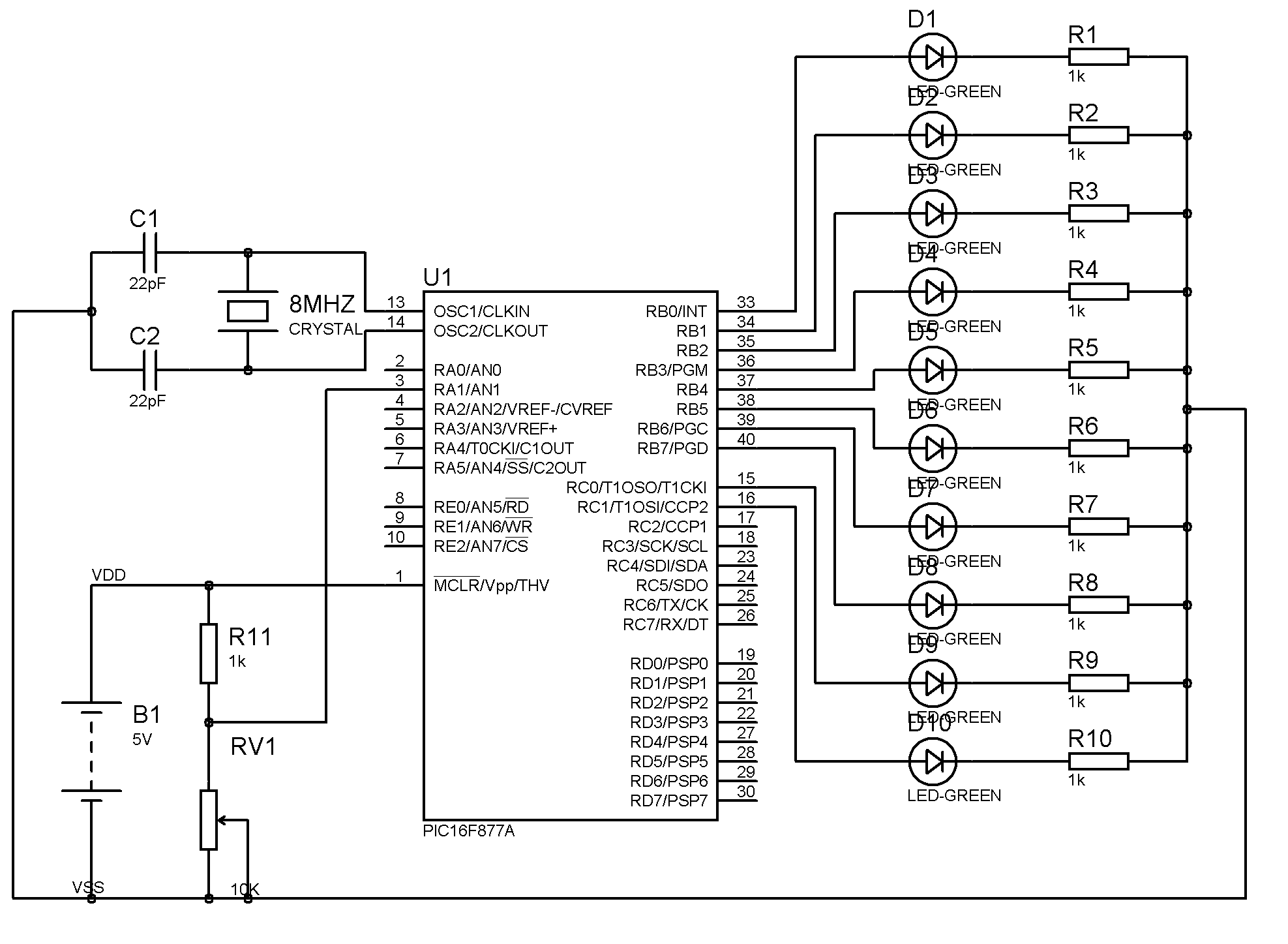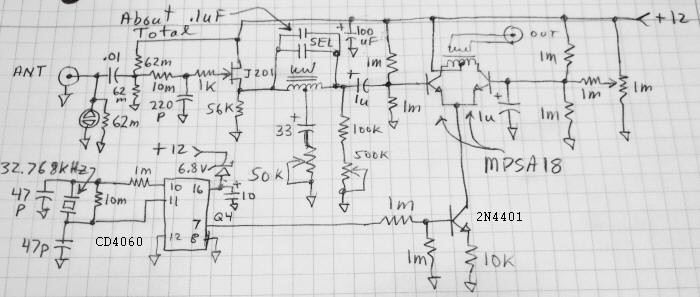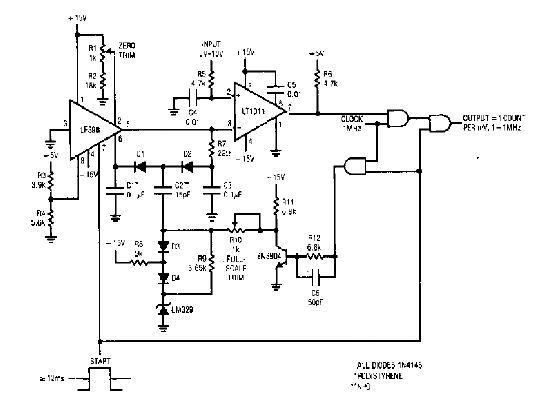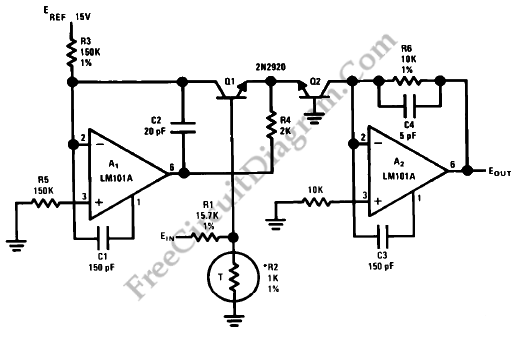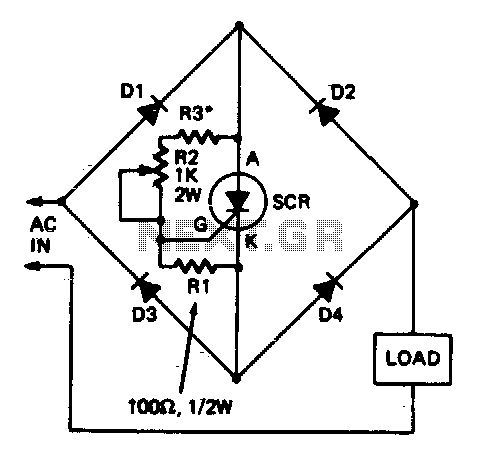
Sine wave output V F converter
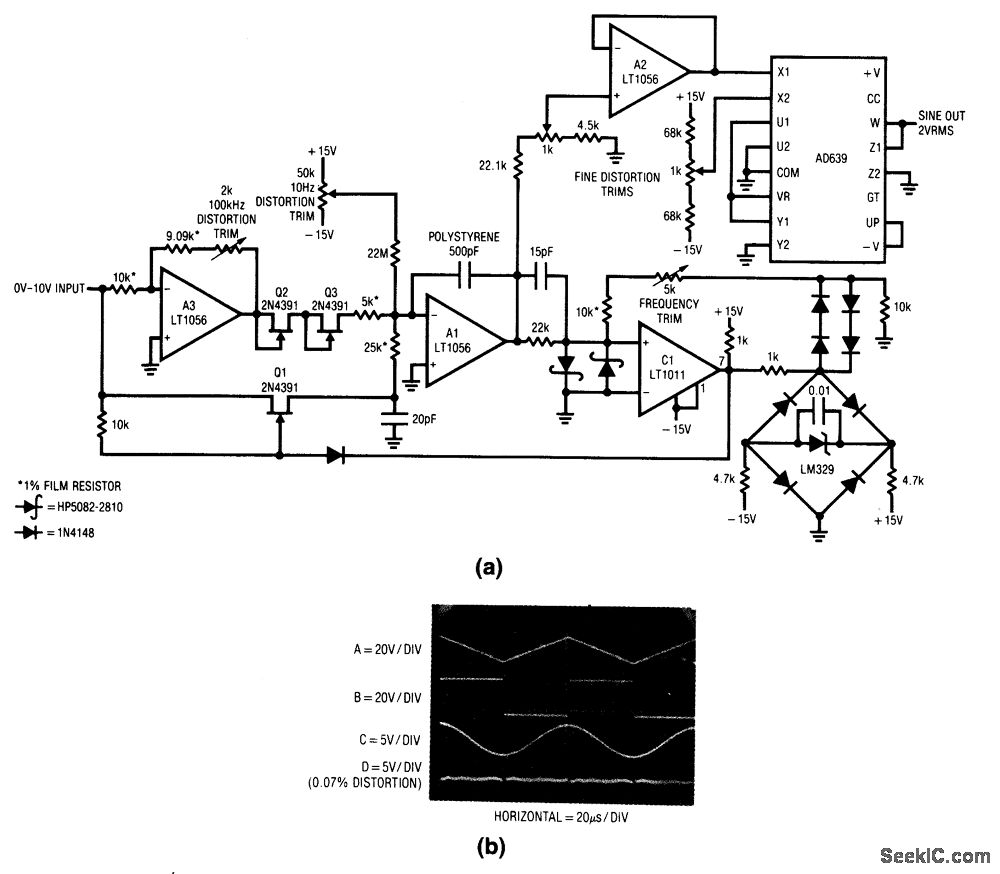
Most of the voltage-to-frequency (V/F) converters discussed in this chapter generate pulse or square-wave outputs. However, many applications, such as audio processing, filtering, or automatic equipment testing, necessitate a sine-wave output, which is produced by this particular circuit. The sine waves generated span a frequency range from 1 Hz to 100 kHz (100 dB or five decades) for an input voltage of 0 to 10 V, featuring 0.1% frequency linearity and 0.2% distortion. Drift is specified at 150 ppm/°C, and zero-point drift is 0.1 Hz/°C. To calibrate the circuit, a 10.00 V input should be applied, followed by adjusting the 2 kΩ 100 kHz distortion trim for a symmetrical triangle output at point A1. Subsequently, a 100 V input should be applied to adjust the 50 kΩ 10 Hz distortion trim for triangle symmetry. After this, reapply 10.00 V and adjust the 5 kΩ frequency trim to achieve a 100.00 kHz output. Finally, both 1 kΩ fine distortion trim potentiometers should be adjusted to minimize distortion in the sine-wave output (as indicated in trace D of Fig. 12-12B). Minor readjustments of the other trim controls may be necessary to achieve the lowest possible distortion.
The voltage-to-frequency (V/F) converter circuit described is designed to provide a sine-wave output suitable for various applications requiring high fidelity and low distortion. The circuit operates by converting an input voltage in the range of 0 to 10 V into a corresponding frequency output, which is particularly useful in audio and testing environments. The ability to generate sine waves across a wide frequency range (1 Hz to 100 kHz) makes this circuit versatile for multiple use cases.
The specifications indicate a high degree of frequency linearity (0.1%) and low distortion (0.2%), which are critical for maintaining signal integrity in sensitive applications. The drift parameters (150 ppm/°C for frequency drift and 0.1 Hz/°C for zero-point drift) suggest that the circuit is designed to maintain stable performance across temperature variations, ensuring reliable operation in diverse environmental conditions.
Calibration procedures are essential for optimizing the performance of the circuit. The steps outlined for trimming the distortion and frequency adjustments involve applying specific voltage levels and making precise adjustments to various trim potentiometers. The use of a symmetrical triangle output as an intermediate step allows for accurate tuning of the sine-wave output, ensuring that the final signal meets the stringent requirements for low distortion.
In summary, this V/F converter circuit is engineered to deliver high-quality sine-wave outputs with excellent linearity and minimal distortion, making it suitable for applications that demand precision and reliability in signal generation. The detailed calibration process outlined ensures that users can achieve optimal performance tailored to their specific requirements.Most of the V/F converters in this chapter produce pulse or square-wave outputs. Many applications (such as audio, filter, or automatic-equipment testing) require a sine-wave output, such as is produced by this circuit. The sine waves from this circuit span a range from 1 Hz to 100 kHz (100 dB or X5 decades) for a 0- to 10-V input, with
0. 1% frequency linearity and 0. 2% distortion. Drift is 150 ppm/ƒ and zero-point drift is 0. 1 Hz/ƒ. To trim, apply 10. 00 V and adjust the 2-k © 100-kHz distortion trim for a symmetrical triangle output at Al. Next, apply 100 V and adjust the 50-k © 10-Hz distortion trim for triangle symmetry. Then, apply 10. 00 V again and adjust the 5-k © frequency trim for a 100. 00-kHz output. Finally, adjust both 1-k © fine distortion trim potentiometers for minimum distortion of the sine-wave output (trace D of Fig. 12-12B). Slight readjustment of the other trim controls might be required to get the lowest possible distortion.
🔗 External reference
The voltage-to-frequency (V/F) converter circuit described is designed to provide a sine-wave output suitable for various applications requiring high fidelity and low distortion. The circuit operates by converting an input voltage in the range of 0 to 10 V into a corresponding frequency output, which is particularly useful in audio and testing environments. The ability to generate sine waves across a wide frequency range (1 Hz to 100 kHz) makes this circuit versatile for multiple use cases.
The specifications indicate a high degree of frequency linearity (0.1%) and low distortion (0.2%), which are critical for maintaining signal integrity in sensitive applications. The drift parameters (150 ppm/°C for frequency drift and 0.1 Hz/°C for zero-point drift) suggest that the circuit is designed to maintain stable performance across temperature variations, ensuring reliable operation in diverse environmental conditions.
Calibration procedures are essential for optimizing the performance of the circuit. The steps outlined for trimming the distortion and frequency adjustments involve applying specific voltage levels and making precise adjustments to various trim potentiometers. The use of a symmetrical triangle output as an intermediate step allows for accurate tuning of the sine-wave output, ensuring that the final signal meets the stringent requirements for low distortion.
In summary, this V/F converter circuit is engineered to deliver high-quality sine-wave outputs with excellent linearity and minimal distortion, making it suitable for applications that demand precision and reliability in signal generation. The detailed calibration process outlined ensures that users can achieve optimal performance tailored to their specific requirements.Most of the V/F converters in this chapter produce pulse or square-wave outputs. Many applications (such as audio, filter, or automatic-equipment testing) require a sine-wave output, such as is produced by this circuit. The sine waves from this circuit span a range from 1 Hz to 100 kHz (100 dB or X5 decades) for a 0- to 10-V input, with
0. 1% frequency linearity and 0. 2% distortion. Drift is 150 ppm/ƒ and zero-point drift is 0. 1 Hz/ƒ. To trim, apply 10. 00 V and adjust the 2-k © 100-kHz distortion trim for a symmetrical triangle output at Al. Next, apply 100 V and adjust the 50-k © 10-Hz distortion trim for triangle symmetry. Then, apply 10. 00 V again and adjust the 5-k © frequency trim for a 100. 00-kHz output. Finally, adjust both 1-k © fine distortion trim potentiometers for minimum distortion of the sine-wave output (trace D of Fig. 12-12B). Slight readjustment of the other trim controls might be required to get the lowest possible distortion.
🔗 External reference
